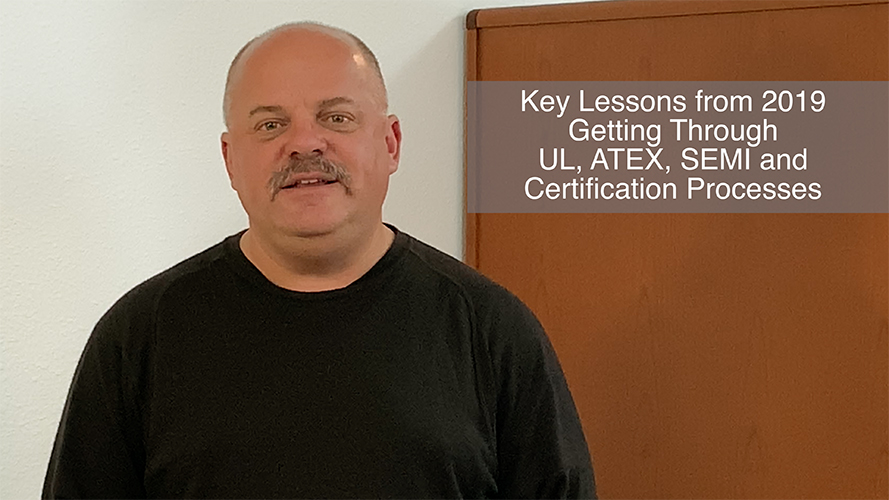It’s been a great year 2019. Lot’s of great projects, good times with clients, collaborators and partners. Steve Barcik Amstel, is sharing on key lessons we have learned with our clients this year for UL, ATEX, SEMI and other certifications.
Link to video also available here: https://youtu.be/Q81n3q-Gucc
1. Build your requirements document to include standards and certifications needed.
Engage early, when you start your equipment or product development cycle, let your certifications lab know, so that they can develop a scope and support your requirements document.
First off, the key thing to do is to get together with your team and us to determine the scope of the certifications you’ll need and the standards involved. This gives you a clear understanding early on in the design process of what you will need to incorporate in your product to achieve compliance with the standards when it is time to get your product certified, listed, labeled or whatever path you need to take it through. Examples; UL 60950 Information Technology Equipment, UL 60950-1 Information Technology Equipment Safety – Part 1: General Requirements, UL 61010-1 Electrical Equipment for Measurement, Control, and Laboratory Use – Part 1: General Requirements
2. When we can help you scope the project at inception it will go much easier.
Engage early with your test and certification lab so that when you are designing a process or product, they have the ability and time to scope what standards and testing will be required. That way you know what the design parameters need to be to meet those standards and codes. And you can design them in early.
3. Buy the standards, and check that you are using the newest version of the standard.
4. The standards have been through many substantial changes in just the past 3-7 years.
Once you know what the standards and codes, you need, the next action is acquire, purchase, download whatever it is those standards and codes so that you and your team have them to refer to consistently during the development of your product. Examples; UL 508A, NFPA 79, and IEC 61010 and IEC UL 60601
5. Understand and get training on the standards
If you and your team are new to developing a product to this particular standard or this particular set of codes, whatever it may be…then get training on each standard. There might be a course that we have online for free or you might be able to download other white papers…we might have a white paper…but go ahead and get some training on it because the standard is going to incorporate the things required yet there is what the test lab has to test for and look for and there may be some other related standards that you are not aware of. By getting the training early in the design process you will be much clearer about how close you are to conforming now and when you are complete. For example, IECEx 60079, a very complex set of standards that will severe you will t get training from us or another team.
6. Complete the Conformity Discovery process, this will save months and tens of thousands of dollars in development and testing.
As you move through the design implement a conformity discovery process. This will, early on, show you what gaps there are in the product as compared to the standards and give you a great path to getting conformity at the end of development of the product. This process allows you to get to market quicker avoid the pitfalls and traps that are created if you design past the standard and don’t have those requirements built in from the start.
Additionally working through the conformity discovery process we’ll look to find if your product falls in a grey area between standards or outside of standards. This is often the most difficult product to get certified.
And it is typical if you are a leading edge company developing something new and unique, there may not be a standard for it. Look to new products to understand that early in the rollout of these new technologies the standards bodies won’t have anything that specifically applies to it. So as part of that conformity discovery process, we will pick two or three standards that well bracket what you are creating and implement parts of that. And if it is in that grey space between standards or isn’t covered at all…we can get with our lab and other labs to help them understand what is going to be coming to them so that they and I can develop a test plan that reaches conformity at the end.
It is very difficult if your product falls between two or three different standards and the lab isn’t prepared for that. That causes really big delays.
You will hear during the conformity discovery process about these grey areas…about spaces where your equipment is not particularly well identified in the standard and then ways that we can help you understand what needs to be designed in.
The conformity discovery process will also do a risk analysis on the whole entire product with special attentions to those risks that are not directly dealt with in the standards.
As we are moving through the process be transparent about risks, previous issues, accidents, hazards and things that have happened with similar products within your company. By being transparent with your evaluators, they can see what might be helpful and how we might be able to more effectively evaluate and certify the product.
7. Be transparent about scope, issues, design risks, and hazards.
Be clear about the scope of the evaluation. This is very critical because the evaluators will be setting a length of time to be on site with you to evaluate the equipment. They have evaluated lots of equipment and so they know how long it will take to do the scope presented. However, if they arrive on site and instead of one piece of equipment, there are four or five separate enclosures that are spread across the factory floor, then they will not be able to achieve the result you desire.
8. Be clear about the scope, and follow up on the scope with your evaluators
By sharing the scope of the equipment early and even maybe putting it in bullet points in an email. For example: We have the main process chamber. We have a waste chamber that is a separate enclosure remote from the equipment. And additionally remote from the equipment, we have a chemical supply cabinet.
Then your evaluator will be able to know how long he/she needs to be on site with you to get the work done in a clean and efficient manner. And get you the result that you really want.
9. If scope changes share that as soon as possible, keep scope changes to product and evaluation to a minimum
During the development of your product often times you might find out that you need heaters, or compressors or additional subsystems to make the process or equipment work the way that you would like. As those things develop, just shoot your evaluator or your test lab a quick email saying that you found out that you need a compressor or whatever in your equipment and it is going in a separate cabinet and here is how it is going to be powered and where from and things like that…They can then quickly get up to speed on what you need. And say that you put that compressor cabinet in and you added a large pressure tank…they will know that you need the pressure equipment directive as well. And they will be able to show you within the standard what the requirements are for the new parts of this system. Ul 60204 and UL 508A are critical to such changes.
10. Be realistic about the process, the time, and costs.
Be realistic about how long this process might take. We at High Tech Design Safety are really going to give you a real number and what it is going to take. Often times, people come back to me and say, “Wow, you know this other lab said that they could do it in three weeks and you told me that it was going to take three months.” And I’m like…yep. A particular piece of equipment will take three months. In the thirty plus years that I’ve been doing this work I’ve never seen a test lab that was able to put out an evaluation report on a complex piece of equipment in three weeks.
And you have to think about your internal processes. I know that I just spent three or four weeks getting to be an approved vendor for a company that I have already been an approved vendor for decades. Their processes changed and therefore their project slipped even though…guess what…I’m leaving today on the airplane to go get it done for them.
And then the last thing is as you develop your product; know what the schedule will likely be. If we share with you that it is going to take 3 or 4 months to get your product through our evaluation process and then listed…be realistic and scope it to your team as maybe 4.5 to 5 months because we are not sure what is going to get in the way as we move along. If you come back and hit that 3.5 or just under 4 month timeframe…you are going to be a hero. But if you jump in and tell them we are going to accelerate it and we can probably get it done in less than 3 months…you are setting yourself up or your team up for disappointment. When you share with your team what the expectations are of timeline and cost for evaluation, listing and certification be sure that you give the bigger number to them. And still…in order to hit the numbers that we provide…your team and us both have to agree to turn things around quickly, to trust each other and move the product rapidly through the process. So if we ask for some documentation, it’s not because we just need it for a file. We actually need to inspect it, understand it, and evaluate it so that your equipment can be certified, tested or listed.
11. Under promise and over deliver; So that conformity is not a guessing game for your team, marketing, sales and management.
Thank you so much for watching this video. We wish you and yours a Merry Christmas, Happy Holidays, and Happy New Year. 2019 has been a wonderful year. It has been great. Lot’s of good projects…lots of new friends and clients…and new team members here at High Tech Design Safety as well. We are continuing to expand our capabilities and wish you and yours the best going into 2020. Thank you for everything…Have a lovely new year.
Please like and subscribe below and if you have questions about these steps, process, UL, ATEX, SEMI and other certifications please get into touch with us here at High Tech Design Safety. https://hightechdesignsafety.com/


